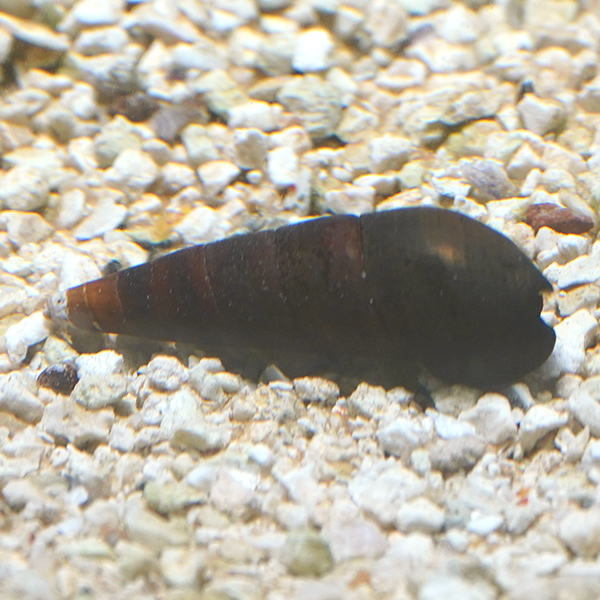
Additional locales and sizes may be available!
Additional locales and sizes may be available! Email me when availableQuick Stats
What do these Quick Stats mean? Click here for more information
What do these Quick Stats mean? Click here for more information
Overview
The Black Devil Snail Faunus ater is an extremely hardy species that is valued for both its looks and because it is an effective algae eater. It is able to live in both freshwater and brackish water conditions, but brackish water is necessary for it to breed.
They grow to a relatively large size for snails and are desired because they have an incredibly beautiful shell that is a glossy chocolate brown or black and a body color in chestnut brown. Its shell is long and whorled that tapers to a sharp point that resembles a spike. For this reason, it is known also as a Black Spike Snail or Black Devil Spike Snail. Its foot is a grayish black color with a light dotted pattern. It releases a terrible aroma when it dies.
This fish benefits from water that is supplemented with calcium to help ensure its shell remains strong and healthy. It will be an excellent addition to your cleanup crew as it is a scavenger and will aerate your substrate. It also fertilizes plants. Because it prefers warm water, an aquarium heater might be needed. If the room temperature is around 70–72°F, the fish can manage, but its metabolism will slow down, making it sluggish and lethargic.
The Black Devil Snail is active in the substrate and plants with weak roof systems may get nibbled on or upended. Though they are safe to keep with other snails and shrimp they should not be kept with crayfish or crabs. They also have delicate antennae, so fish that will nip at them should be avoided.
It is difficult to distinguish between males and females by their external features. The reproductive biology of Black Devil Snails is largely unknown, but they are thought to be oviparous and the fact that they cover large geographic areas suggest their larval stage is free swimming.
This member of the Pachychilidae family is an omnivore that effectively consumes algae and detritus, but their diets should be supplemented with foods containing algae and vegetative content to provide them with a diverse and balanced diet.
Approximate Purchase Size: Large 2” to 3”









